Content Adaptive Brightness Control (CABC) is a feature that adjusts the contrast and brightness of your display to extend the battery life. The adjustment primarily depends upon the content visible on the display. This feature is slightly different from ‘Adaptive Brightness’, which modifies the brightness according to the room lighting.
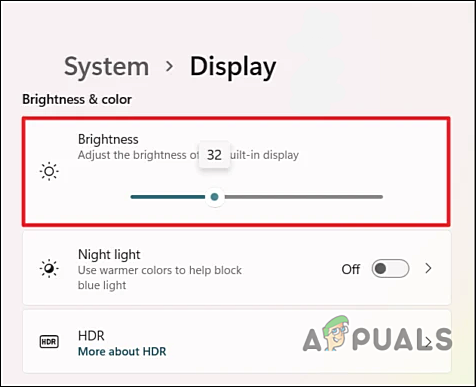
While CABC proves to be helpful in extending the overall battery life of devices, there can be instances where the sudden changes in brightness levels can be distracting for the users. Moreover, this feature decreases the image quality, so it might not be a good option for showing color-accurate content.
How does Content Adaptive Brightness Control Work?
Before we jump into discussing ways to disable the CABC feature, let’s have a quick look at how exactly it works.
With Content Adaptive Brightness Control, your screen’s brightness and contrast are dynamically adjusted. In other words, it is an extension of the existing screen brightness controls such as manual adjustment and automatically adjusting the brightness based on light conditions (auto-brightness). For instance, you may notice a change in contrast and brightness if you watch a video with a dark scene (filmed at night) followed by a bright scene (filmed on a bright, sunny day).
How to Disable Content Adaptive Brightness Control (CABC)
Use Windows Settings
The easiest way to disable CABC on Windows 11 is by modifying Windows Settings. However, note that this method can be used by all standard users. If you wish to make changes as an administrator for all user accounts, then jump to the next method.
- Press Windows + I keys simultaneously on your keyboard to launch Windows Settings.
- In the Settings window, select System from the left pane and click on Display on the right side of the window.
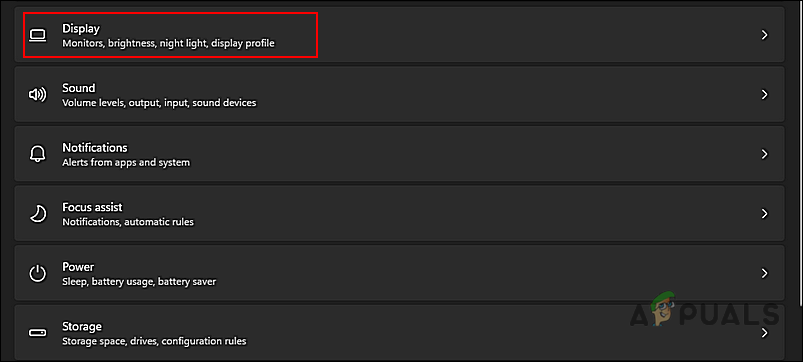
Expand the Display settings - Now expand the Brightness option and uncheck the box associated with ‘Automatically adjust contrast based on the display content to help improve battery’.
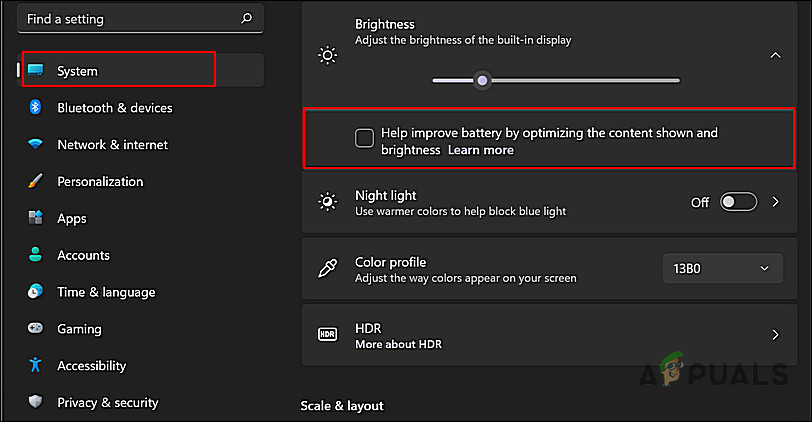
Uncheck the highlighted box to disable CABC - Once done, close the Settings window. This should disable Content Adaptive Brightness Control on Windows 11.
Modify Windows Registry
- Press Windows + R keys simultaneously on your keyboard to open a Run dialog box.
- In the text field of the dialog box, type regedit and hit Enter. Click on Yes in the User Account Control prompt.

Open up the Regedit Editor - Once you are inside Windows Registry, navigate to the location mentioned below.
HKEY_LOCAL_MACHINE\SYSTEM\CurrentControlSet\Control\GraphicsDrivers
- Now right-click anywhere in the right pane and select the New > DWORD (32-bit) Value option.
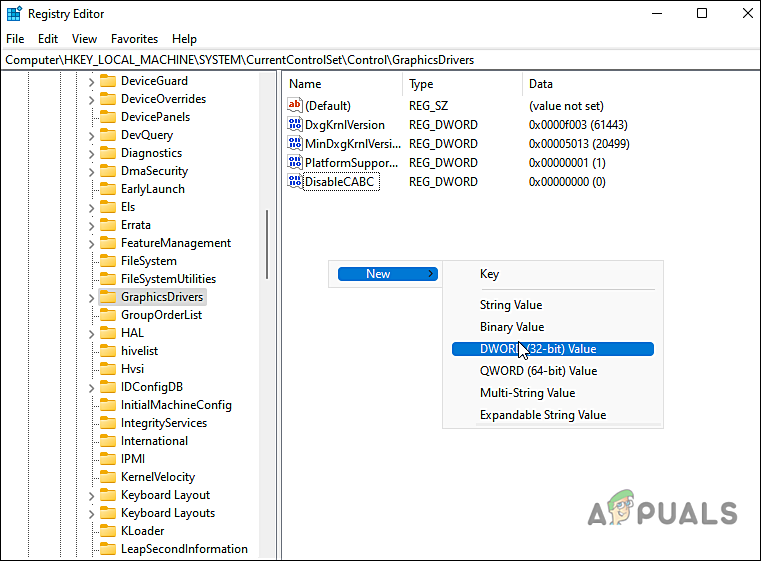
Create a new DWORD value - Rename this newly created value as DisableCABC.
- Double-click on DisableCABC and under Value date, type 1.
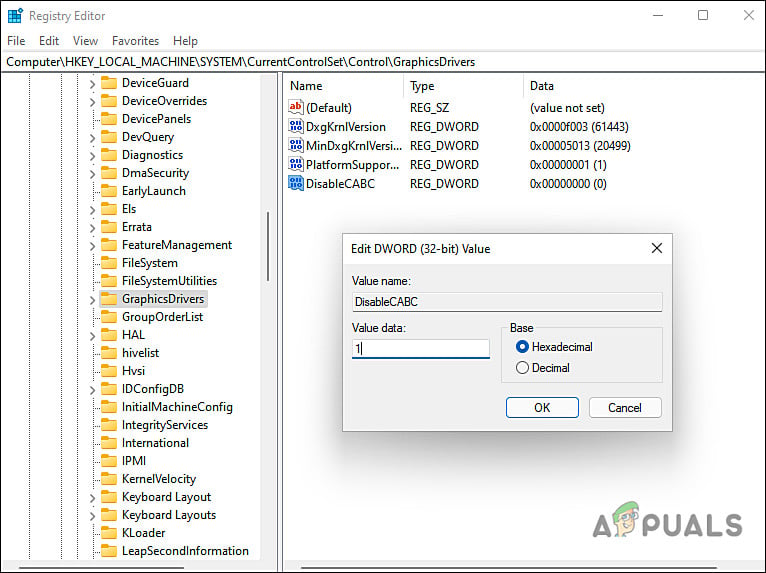
Change the Value data of CABC value - Finally, restart your PC to save the changes.
To enable Content Adaptive Brightness Control in the future, you can either simply delete the Registry value created or change its value to 0.
The post How to Disable Content Adaptive Brightness Control (CABC) on Windows 11? appeared first on Appuals.com.


0 Commentaires